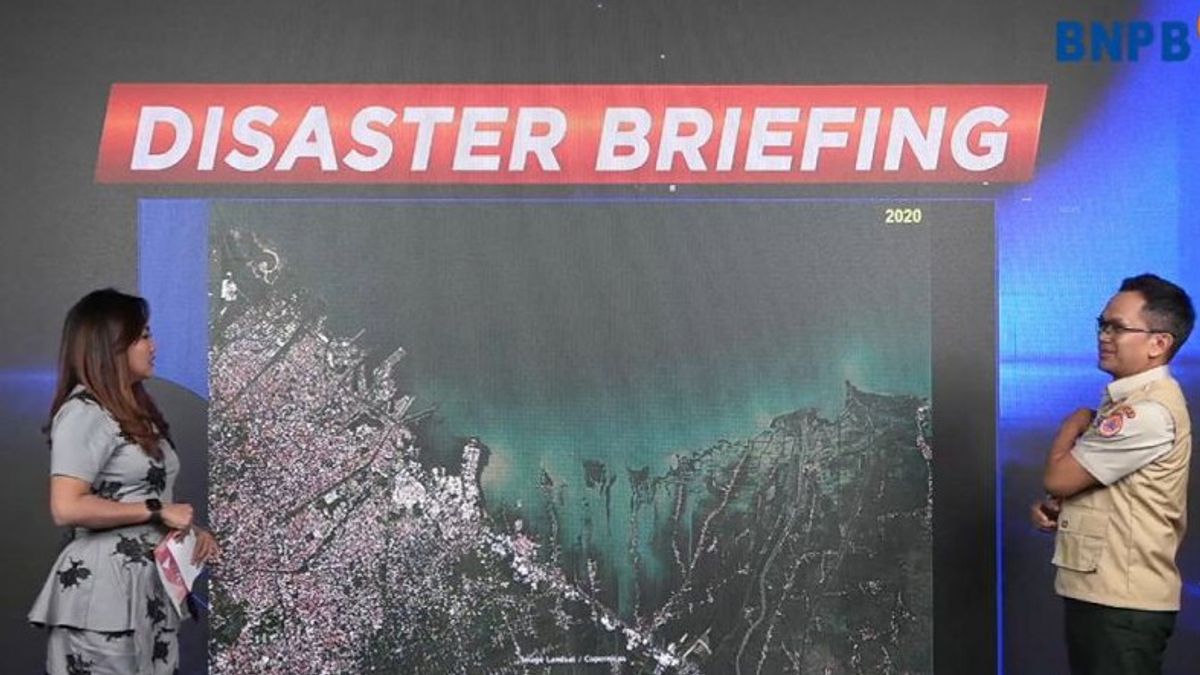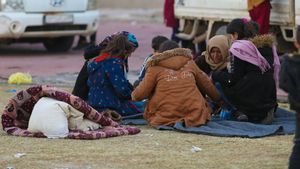JAKARTA - The National Disaster Management Agency (BNPB) provides several alternative solutions that can be done to deal with tidal flooding in Demak, Central Java, which has so far reportedly affected 23 villages, 157 public facilities, 6,088 hectares of agricultural land, and 44,884 people.
"What can be done to reduce the impact of long-term rob is to reduce groundwater suction, restore mangrove function, and conduct a thorough study of the impact of reclamation, so structure development planning in a series of beach cells must be carried out," said Acting Head of the BNPB Disaster Data, Information and Communication Center Abdul Muhari as reported by ANTARA, Monday, May 22.
Abdul Muhari or who is familiarly called Aam said that reclamation is indeed one of the trigger factors for beach ownership or abrasion, but that does not mean reclamation cannot be carried out.
It's just that, he said, planning and calculating the potential impact must be comprehensive and integrated in one beach cell.
"If in coastal engineering science, one or two meters build a structure that enters the sea, then the impact can be 1-2 km to the left and right, because the movement of sediments (soluble matrices with water) is tens of km, once we block it, one side may experience sedimentation (material deposition), but on the other hand it will disappear, which makes sea water rise," he said.
According to him, if you really want to intervene in the beach, you have to have a cell structure, you can't just on one side because it will damage several parts, for example what happens in Demak, when the reclamation is carried out in Semarang, then the affected are the beaches on the Demak coast.
"The history of the Demak coast intersecting with the Semarang coast, we know that Semarang is very active in 1990 carrying out coastal reclamation, while in 1990 mangroves were still there, but they were not strong enough to protect, then for one basis (10 years), we can see that the Demak coastline is decreasing until 2020 is running out," he said.
He also explained that one of the other factors that caused tidal flooding was land subsidence, where in Semarang there was a decrease of 12-14 mm per year, while in Demak it was 4-5 cm per year.
So to overcome the land subsidence, he suggested that people not continue to lift the road and suck up groundwater.
Baca juga:
As for the short-term solution, Aam recommends building a hard structure, which aims not only as a embankment, but also to protect so that replanted mangroves can grow well.
According to him, the hard structure should not only be built with concrete basic materials, but can also be hybrid engineering, or utilize natural materials, such as tree branches that can be used to temporarily hold and restore sediment.
In addition, it is also recommended that ponds on the coast that are no longer productive can be used to plant mangroves again.
"When this mangrove land is converted into ponds, its function is lost, but that does not mean that people cannot build ponds, it can be overcome, for example, from one area of the pond that has been made, the middle part is planted with mangroves, or divided into two, half mangroves, half ponds, so basically we return the mangrove forest function again," said Abdul Muhari.
The English, Chinese, Japanese, Arabic, and French versions are automatically generated by the AI. So there may still be inaccuracies in translating, please always see Indonesian as our main language. (system supported by DigitalSiber.id)













